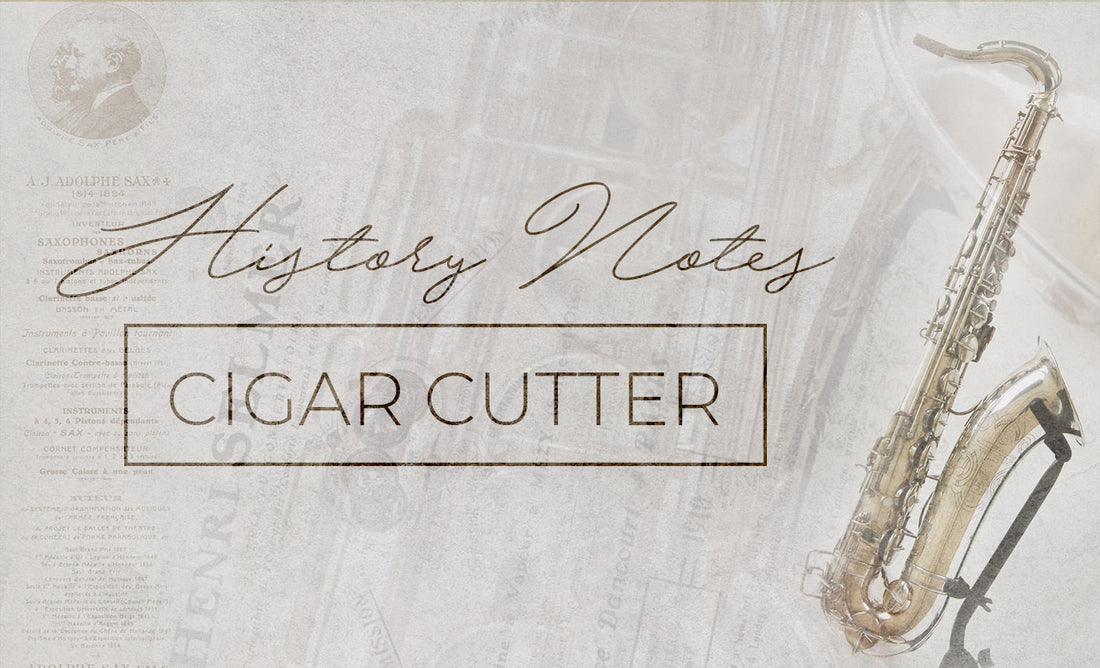History Notes #04 : Cigar Cutter

Cigar Cutter Alto
Anyone who's interested in old saxophones is aware of the SELMER Super Sax, the SSS logo on the instrument. It has become synonymous with the octave mechanism that was introduced at the same time which resembled a cigar cutter that clips the end of your cigar. So the saxophone became known as the Cigar Cutter. There was a lot of variations in introduction and distribution, so let's talk just about Alto's.

At about fourteen thousand serial number, this is in the spring of nineteen thirty one, there was a major development that went on. One of the key weaknesses of early saxophones was physically the weakness of the neck receiver. It tended to split, so much more robust neck receiver was built. It also featured an integrated layer holder and it was in general a vast improvement over the previous. They also introduced a removable pant guard, a triangular device, which really helped in keeping the pants out of the left hand bell case and a number of other improvements. With the improvements of the Supersax Alto, The SELMER saxophone really was competing in the American market, so some of the more flamboyant designs like the big, very visible triangular pant gard design was really something that was getting noticed.
For all you collectors out there, the very first batch of Cigar Cutter Alto's (about 70 instruments in total), they were produced with all the features, but without the actual SSS stamp. So dig around and you might find one of those really rare and exciting saxophones.

American market, europeen market
Starting right after that, the SSS stamp was put on and this continued in the American market from about fourteen thousand to about seventeen thousand. In the European market, however, the Cigar Cutter went from fourteen thousand to about eighteen thousand nine hundred right to the beginning of the Radio Improved. So we'll see some differences in the markets.
What happened at seventeen thousand for the Alto's in the American market is that they introduced a second octave key. I think it's a great mechanism. It features two almost knuckles that work together. It's the very first iteration of the swivel bar concept of an octave key mechanism which has become standard worldwide today. So from seventeen thousand to nineteen thousand, for the American market only, we feature what we call the geared octave mechanism.

At around fourteen thousand, the tenor received most of the upgrades of the alto and in general looked much like a Super Sax. But for some reason the tenor did not receive the SSS stamp at this time. So from fourteen thousand to seventeen thousand the tenor maintained the old octave mechanism with most of the new improvements, and some call it a 'pre super' because it's essentially a super, but it doesn't have the actual stamp.
At seventeen thousand, this is where it gets interesting, the American market received the first true SELMER super tenor's with the geared octave mechanism, but Europe received the same tenor's with the Cigar Cutter octave mechanism. So, again, for collectors out there, if you're looking for a true SELMER tenor cigar cutter, only about one hundred and eighty were made.
► Subscribe to our youtube channel so you don't miss any episode
► Next episode: Radio Improved
► Discover History Notes as a podcast